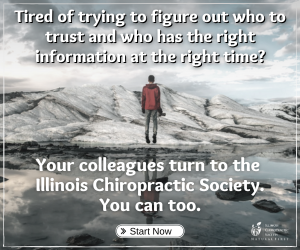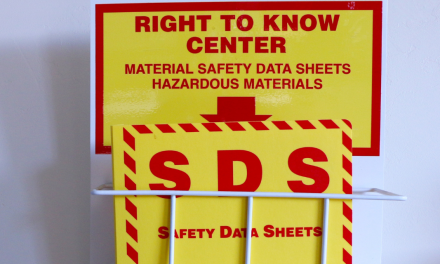
Cervical Hyperextension

Factors affecting injury & prognosis after cervical hyperextension/ hyperflexion injuries: a literature synthesis.
If you drop a basket of apples, which ones will be bruised? Can you consistently predict the outcome? There is no scientific formula that will do this. There are however factors that will influence the damage. Auto accidents are similar in that there are factors affecting injury and outcome but ultimately each situation needs to be viewed individually.
Current literature suggests that up to 83% of individuals involved in a motor vehicle accident (MVA) suffer a whiplash injury (1). Greater than 50% of those injured report ongoing neck pain one year after the accident (2). Of those experiencing neurologic signs post-MVA, up to 90% may be symptomatic after one year (2).
Change in velocity (ΔV) is the prime factor related to passenger injury. Factors affecting ΔV and subsequent bodily injury can be generally categorized into either “extrinsic factors” (i.e. collision environment), or “intrinsic factors” (i.e. occupant characteristics).
Extrinsic Factors
Vector of impact– Since a vehicle is designed to travel along its longitudinal axis, it makes sense that forces applied to a stopped vehicle from this plane will generally create greater acceleration. Many studies have suggested that the vector of impact from a rear-end collision causes greater bodily injury than being struck from other angles (3,4).
Vehicle mass– Physics dictates that the mass of the vehicles involved has a significant effect on injury and extent of trauma. Since the amount of energy entering into a collision is equal to the amount of energy released from that collision, large vehicular weight differences greatly increase the risk to occupants of the smaller vehicle. This is particularly evident when the energy of a faster moving rear car is transferred to a smaller stationary front car.
Vehicle damage– We’ve all heard the worn-out rhetoric that starts: “if there was no damage to your car…”
Chiropractors clearly understand that simply because a vehicle is not visibly damaged as a result of an accident does not equate to an expectation that the occupant was not injured. In fact, the amount of vehicle damage may have little relationship to the injury sustained by the occupant(s) (5,6). Most modern cars have shock absorbent bumpers that minimize damage to the vehicle but not necessarily to its occupants. In a “vehicle to vehicle” crash involving both vehicles shock absorbent bumpers, it is estimated that the minimum speed to cause visible damage is approximately 15 mph. This 15 mph collision is well above the documented threshold of bodily injury. Morris reported that rear-end impacts of five mph or less routinely give rise to significant symptoms (7).
Restraints– Seat belt and shoulder harness use have decreased the number of fatalities, but have significantly increased the number of spine injuries (8). Seat belts hold the body in place, causing the neck to suffer increased hyperflexion loads from the inertia of the unrestrained head. A study of 13,000 rear-impact victims, found that restrained drivers were three times more likely to suffer cervical spine injury (9). Although properly positioned head restraints may reduce injury, one study found that head restraints are not properly positioned 75-90% of the time, and restraint in the full down position may act as a fulcrum and actually increase neck injury. (4)
Road conditions– Wet or icy roads will increase acceleration and injury.
Intrinsic factors
Head position– A rotated or extended head will predispose the spine to more complex loads thereby increasing the risk of injury to those pre-stressed tissues, particularly the facet joints and discs. If the head is turned, the injury will be greater on the ipsilateral side. One study found that the single factor most significantly related to symptom persistence was rotated head position at the time of impact (4).
Awareness– Occupants unaware or unprepared for impact experienced greater injury and slower recovery than those braced for impact (4). In a small study, Ryan noted that “Subjects who were unaware of the impending collision were 15 times more likely to have a persisting condition than those who were aware.” (10)
Braking– Croft (11) reviewed several studies that looked at the effect of braking, and concluded: “Release of brake pressure during a rear-impact collision will magnify the resulting acceleration of the occupant while increasing the likelihood of a secondary collision. Moreover, as the occupant decelerates and is thrust forward in the seat, the foot would most likely renew its contact with the brake pedal…thereby intensifying the deceleration of the occupant”. This effect may be compounded by concurrent secondary collision with another vehicle in front.
Age– As tissues become less elastic, reflexes slow and strength wanes, risk of injury would be expected to increase with age (12), although some data suggest that advancing age may not have as dramatic of an effect on injury rates as once believed (13).
Gender– Females are more likely to report neck pain and slower recovery than males (2,12,14,15). Some studies have reported that females were twice as likely to take sick leave following MVA (4). This may be due to body habitus differences including proportions of neck size and strength differences. Interestingly, risk of neck injury increases with a woman’s height but no such relationship has been found for men (16). Additionally, women tend to sit further forward in their car seat, moving them away from their head restraint (16).
Preexisting degenerative joint disease and pain– The 2000-2010 task force on Neck pain authors found “no scientifically admissible studies which addressed the role of disc degeneration on recovery” (2). However, the evidence does exist to support a connection between prior neck pain and ongoing symptoms post-MVA. Drottning (17) determined that people with prior neck pain and headaches were almost three times as likely to experience symptoms after MVA as compare to a prior asymptomatic group.
Symptom onset– It is generally recognized that patients with early or immediate onset symptoms are at a higher risk for long-term pain. There is consistent evidence that those reporting earlier or more severe post-MVA symptoms had a poorer prognosis for recovery (2). However, the delayed onset of symptoms does not necessarily minimize injury.
Other risk factors for poor outcome include; depression (14), poor psychological coping mechanisms (2), lower household income (1), unemployment (1), cigarette smoking (1), and delayed treatment (15).
References
- Nolet PS, Pierre C, Cassidy JD, Carroll LJ, (2010) The association between a lifetime history of neck injury in a motor vehicle collision and future neck pain: a population-based cohort study. Eur Spine J 19:972-981
- Carroll LJ, et al (2008) Course and prognostic factors for neck pain in whiplash-associated disorders: results of the Bone and Joint Decade 2000-2010 Task Force on Neck Pain and its Associated Disorders. Spine 33(suppl): S83-S92
- Bylund PO, et al (1998) Sick leave and disability pension among passenger car occupants injured in urban traffic. Spine 23:1023-8
- Sturzenegger M et al (1995) The effect of accident mechanism and initial findings on the long-term course of whiplash injury. J Neurol 242:443-49
- Hirsch et al, (1988) Whiplash syndrome. Orthopedic Clinics of North America, Oct., p. 791
- Sturzenegger M et al (1994) Presenting symptoms and signs after whiplash injury: The influence of accident mechanism. Neurology 44:688-93
- Morris F. (1989) Do head restraints protect the neck from whiplash injuries? Archives of Emergency Medicine, 6:17-21.
- Larder DR et al (1985) Neck injury to car occupants using seat belts. BMJ 298:153-68
- Nygren A (1984) Injuries to car occupants-some aspects of interior safety of cars. Acta Oto-Laryngologica (Suppl #394)
- Ryan GV et al (1994) Neck strain in car occupants: injury status after 6 months and crash-related factors. Injury: International Journal of the Care of the Injured 25(8):533-537
- Croft A. (1994) Whiplash: The Masters Program.
- Cassidy JD et al (2000) Effect of eliminating compensation for pain and suffering on the outcome of insurance claims for whiplash injury. N Eng J Med 342:1179-86
- Berglund A, et al (2006) The influence of prognostic factors on neck pain intensity, disability, anxiety, and depression over a 2 year period in subjects with acute whiplash injury. Pain 125:244-56
- Hogg-Johnson S, van der Velde G, Carroll LJ, Holm LW, Cassidy JD, Guzman J, Côté P, Haldeman S, Ammendolia C, Carragee E, Hurwitz E, Nordin M, Peloso PM (2008) The burden and determinants of neck pain in the general population: results of the Bone and Joint Decade 2000–2010 Task Force on Neck Pain. Spine 33(Suppl): S39–S51
- Dufton JA et al, (2006) Prognostic factors associated with minimal improvement following acute whiplash associated disorders. Spine 31: E759-65
- Soft Tissue Review (1998) 3:8 p.29
- Drottning M, et al (2002) Cervicogenic headache after whiplash injury. Cephalgia 22:165-71

















